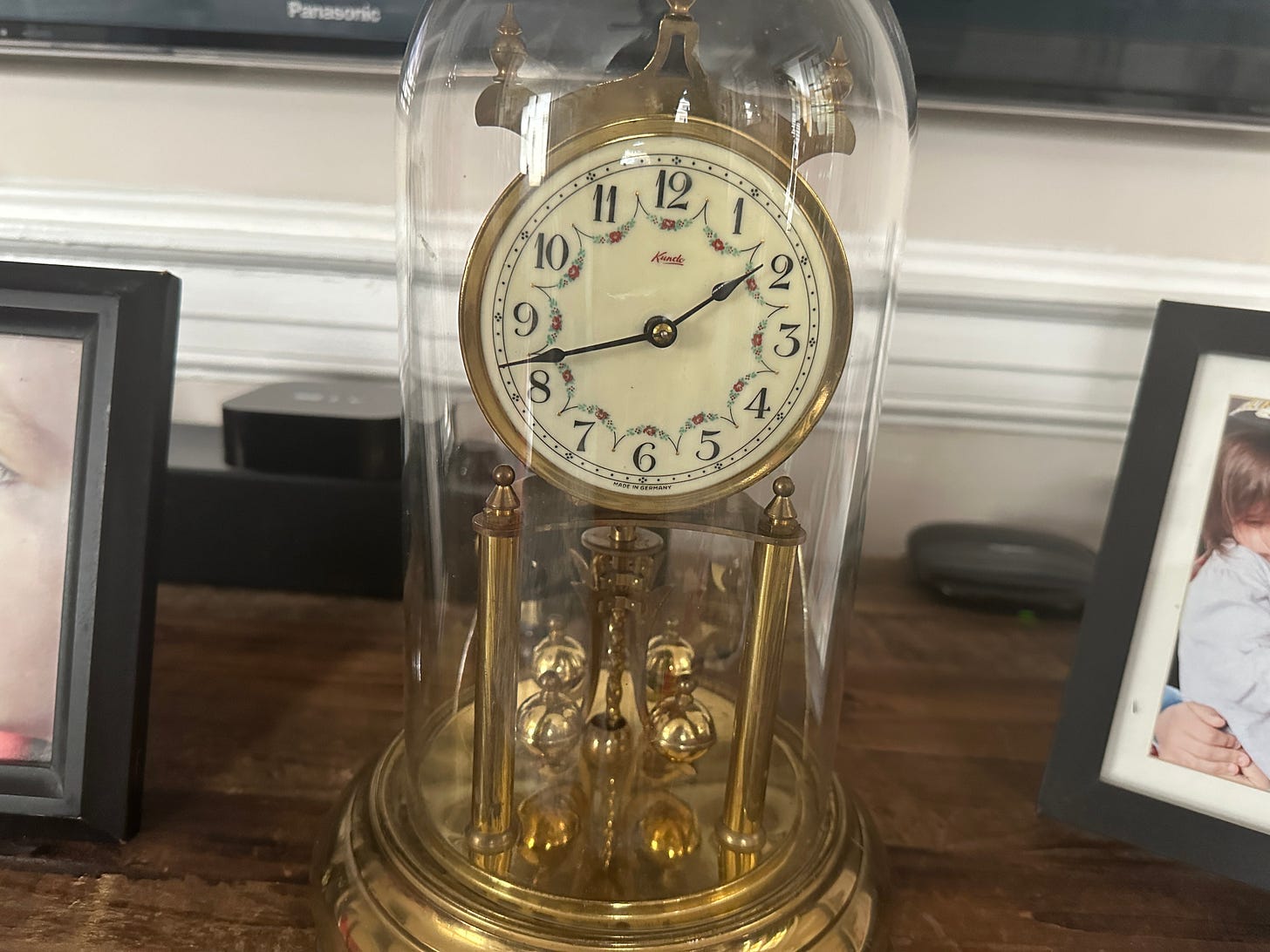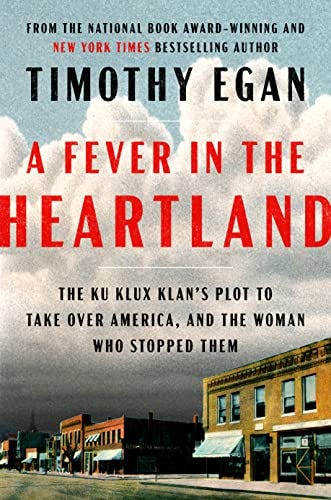Ahoy,
I had a birthday last week and because I’m a wizened old man living in a mechanical clockwork world, I was most excited about winding my Anniversary Clock.
You’ve probably seen one of these in a grandparent’s bedroom. They were quite popular last century and they feature a set of spinning balls that cause the clock to tick once over 45 seconds or so. The speed of the ticks - compare it with the ticking of a regular clock - lets the Anniversary Clock need a wind once a year. I wind mine around my birthday.
Anniversary Clocks are ridiculously difficult to fix. The weights are attached by a thin steel strip that twists back and forth and offers enough momentum to keep the balls turning. Getting that strip in the right position with the right torque is nearly impossible. The clock itself is about as accurate as a stick in the ground, primarily because the interval can speed up or slow down depending on the weather, the humidity, and how many kids knock up against it while they run to the bathroom. In short, it’s a ridiculous device.
And yet it’s lovely. The idea that this mechanical thing, built in the early 1900s, is still running as designed is a miracle. I fixed this particular clock myself, a first for me in the horological arts. I received it from my neighbor who knows I love clocks and, like a ship’s clock he gave me, it wasn’t in working order. I putzed around with it for weeks, taking it apart, cleaning the gears, oiling it, and brushing the pivots with an old toothbrush. It was fun. That it came back to life at all is wonderful and that it survived the year is marvelous.
This isn’t a musing about the majesty of old things. This clock is junk. It’s unusable and no sane clockmaker will work on it because it’s so finicky. But with a little love and a little time, I got it working again.
I guess I’m thinking a lot about the value of stuff like this, stuff that works and will work long into the future. There isn’t much of that around anymore - nearly everything we own is stamped with an expiration date - so we cherish things that don’t fail us, even if they are defined more by their limitations than their benefits.
I guess maybe I feel like the clock - still ticking, mostly wrong, fresh and clean yet fairly useless.
On to the books.
A Fever in the Heartland: The Ku Klux Klan's Plot to Take Over America, and the Woman Who Stopped Them
Timothy Egan
This book details one of the most amazing forgotten stories of the 20th century. In the 1920s, the KKK rose to prominence, especially in the Midwest. Indiana and Ohio were Klan strongholds (history, as we notice now with the rise of conservatism in Ohio, doesn’t repeat itself but it rhymes) and the biggest fish in that small pond was a deviant named D.C. Stephenson. Stephenson was an anointed king of the Klan and he was in the habit of sexually assaulting women with impunity. That’s until he met Madge Oberholtzer.
Her story is a tragedy. It also directly led to the rapid dissolution of the Klan in the United States - at least in its 1920s form - and the destruction of some of the worst people in our country. The book is fascinating in that it shows exactly what it takes to take down evil and how violent things have to be to even crack its edifice.
Wild Tales: A Rock & Roll Life
Graham Nash
Man, I never even liked CSNY but I did like Graham Nash’s retelling of his rise and rise. Nash is a consummate rocker and nearly every page involves him nailing someone after a show but the description of his life and experience as the founder of the Hollies and Crosby, Stills & Nash is a lovely bit of piffle to cleanse the palate after a few deep books this month.
Trust the Plan: The Rise of QAnon and the Conspiracy That Unhinged America
Will Sommer
Consider yourself lucky if you’ve never brushed up against QAnon in your online travels. Starting in 2016, Q, a supposed high-level macher in the intelligence agencies, began to tell the story of a cabal of evil politicians who hid children in underground cages to drink their sweet nectar or some shit. Sadly, because people are stupid, these tall tales morphed into a movement akin to the Tea Party if it had been raised on a diet of They Live! and the Protocols of the Elders of Zion. Sommer is a journalist who covered the rise of Q and explores the inner workings of the group with a keen eye for detail. Worth a read.




